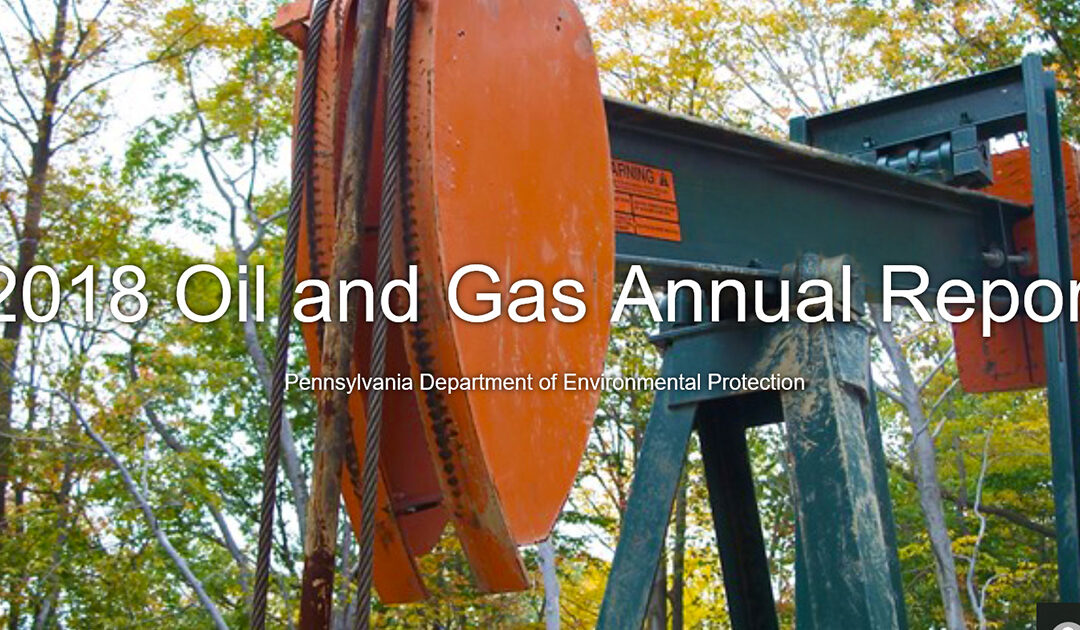Harrisburg, PA – July 10, 2019 − The 2018 Oil and Gas Annual Report released today by the Department of Environmental Protection (DEP) shows that internal restructuring and continued expansion of electronic tools increased permitting and inspection efficiency, while also increasing the overall strength of DEP’s oversight, even as unconventional gas production reached a record level in Pennsylvania.
“DEP attained new levels of efficiency in the permit application and review process as well as site inspections in 2018, and we continue to seek new avenues to improve customer service and environmental protection,” said Secretary Patrick McDonnell. “Governor Wolf and DEP have made permitting and inspection efficiency a priority – reducing overall permit backlog by more than 90 percent since 2016, and improving inspection efficiency while ensuring compliance with our environmental regulations.”
The report notes that DEP personnel completed 36,873 compliance inspections at conventional and unconventional well sites last year, about 585 more than in 2017. The surface activities inspection process moved to tablet computers, making it much more efficient and getting the results to operators and the public faster. All inspections are now done electronically.
The year also brought advancements in permitting. DEP launched an updated Erosion and Sediment Control General Permit, ESCGP-3, in electronic format and provided extensive training to industry on both the new requirements and the electronic application. This surface-activities permit is the second permit to go online, following the subsurface well-drilling e-permit, which rolled out in 2017.
Electronic permit applications eliminate DEP data entry, ensure that applications are complete when submitted, and enable operators to pay permit fees online.
In addition, DEP simplified its internal oil and gas permit review structure statewide, grouping personnel into surface and subsurface programs for enhanced communications and teamwork. By the end of the year, average review time for the ESCGP had dropped to 157 days in the southwest and 85 days in the rest of the state. The average time to review well-drilling permit applications shortened to about 39 days statewide. Across DEP permit backlog has been reduced from more than 8,700 in early 2016 to just 635 in June 2019. Inspection efficiency has also improved by approximately 20 percent through the use of portable tablets and other technological improvements.
DEP issued 1,868 unconventional well permits in 2018, about 160 fewer than the previous year. Sustained low commodity prices coupled with longer wellbores contributed to a decline in permit applications. An interactive map shows well drilling locations by county.
Unconventional well operators produced 6.1 trillion cubic feet of natural gas, an increase of .8 trillion cubic feet over 2017 and the largest volume of natural gas produced in Pennsylvania in a single year.
Through a comprehensive outreach program, DEP assisted operators in achieving a record high 97 percent submission rate for required emergency response plans in 2018, capping several years of effort to increase compliance in this area.
The interactive, multimedia annual report offers several levels of data: the year in review; deeper detail and historical data; and educational overviews of drilling and the regulatory process statewide. For example, users can compare how much gas was produced over the past 10 years, and drill down to see production by individual well.
The annual report also features a section on the many ways the public can stay up-to-date on regulations, for example, by signing up for email notifications or attending Oil and Gas Technical Advisory Board Meetings in person or by webinar.
MEDIA CONTACT: Deb Klenotic, (717) 783-9954
###

